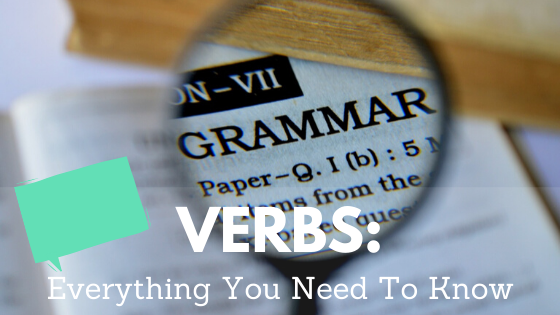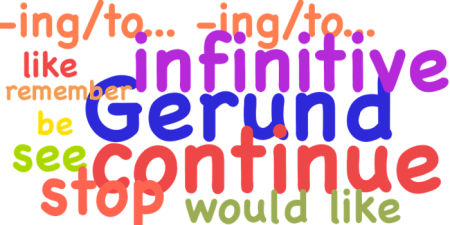
Verbs are best learned with examples as it can often be confusing to know which one to use and when. As a part of speech, a verb is a class of word that indicates an action or occurrence, or a state of being, of an object or living being.
A dynamic verb is an action or occurrence verb, and a stative verb describes a state of being. All full sentences include at least one verb. Verbs are typically called “action words,” but these are in fact several different types of verbs, and not all of them are action verbs.
“Love is a verb and verbs show action.” — Mr. T
There are three main types of verbs: action verbs, linking verbs, and helping verbs. Let’s go through each type of verb with examples and other important information about verbs.
What is an Action Verb?
An action verb is a verb that describes a physical or mental action taken or performed by the subject of a sentence. Action verbs can also show possession. Action verbs may be either transitive or intransitive.
Transitive Verb
A transitive verb is a verb that describes an action that is performed by the subject of the sentence on the object of the sentence.
- Mary put her phone down on the table.
In the above example, the word put is the verb, and it acts on the object of the sentence, which is Mary’s phone.
Intransitive Verb
An intransitive verb is a verb which describes an action that is, like a transitive verb, performed by the subject of the sentence, but which, unlike a transitive verb, is not performed on any particular object of the sentence. There may not even be an object within the sentence.
- The car will be parked there all day.
In the above example, the word parked is the verb, but there is no object on which the verb is acting.
What is a Linking Verb?
Linking verbs are also called copular verbs. The function of a linking verb is to connect the subject of a sentence with a noun or adjective that is being used to describe the subject.
- After many years of schooling, John became a doctor.
In the above example, the word became is the verb, and it is being used to link the subject, John, and the noun, doctor, that is being used to describe the subject.
Linking verbs may also be action verbs.
“We spend most of our lives conjugating three verbs: to want, to have, and to do.” — Evelyn Underhill
What is a Helping Verb?
A helping verb is also called an auxiliary verb. These types of verbs are used to add information to a sentence and more accurately describe what is occurring. Helping verbs add information about possibilities or time. There are two main types of helping (or auxiliary) verbs, called primary auxiliary verbs, and modal auxiliary verbs.
Primary Auxiliary Verbs
The primary auxiliary verbs are be, do, and have. When used by themselves, these verbs are linking or action verbs. When used as auxiliary verbs, these verbs are accompanied by other verbs and form a verb phrase.
- The teacher will be reading the book aloud this afternoon.
In the above example, reading is the main action verb, and will and be are used to indicate that the action of reading will occur at a time in the future.
Modal Auxiliary Verbs
Modal auxiliary verbs show possibilities, willingness, ability, or obligations. These verbs never change form (i.e. they are not conjugated).
The modal auxiliary verbs are listed here:
| can | may | must | shall | will |
| could | might | ought | should | would |
- The cat might share the couch with you if you do not squirm about excessively.
In the above example, the main verb is share and the modal auxiliary verb is might.
Verb Moods and Voices
Remember that verbs have both moods and voices.
There are three verb moods, which are the indicative, imperative, and subjunctive moods. The indicative mood is used to exclaim, state a fact, or ask a question. The imperative mood is used to issue a command. The subjunctive mood is used to show a wish, suggestion, or demand, or to show a situation that is not an actual fact. The subjunctive mood can be more difficult to understand, so here is an example for each of the two uses of a subjunctive mood.
- to show a wish, suggestion, or demand: He suggested that she see a doctor. (the action to see a doctor has been suggested)
- to show a situation that is not an actual fact: She wouldn’t do that if she were here. (she is not here)
Verb voices may be either passive or active. A passive verb voice is when the subject of a sentence does not perform the action. An active verb voice is when the subject of the sentence does perform the action.
- Passive: The test was taken by her.
- Active: She took the test.
Verb Tenses with Examples
Finite vs. Non-finite Verbs
A finite verb has a tense and can stand alone in a sentence.
“Life on Earth is more like a verb. It repairs, maintains, re-creates, and outdoes itself.” — Lynn Margulis
A non-finite verb does not have a tense and can only stand alone in a sentence when it is part of a dependent clause (a dependent clause is a sentence fragment that contains a subject and a verb).
Non-finite verbs are infinitives, gerunds, and participles. Infinitives are the base forms of verbs and always begin with the word “to” (the infinitive form of a verb is: to + verb, e.g. to sleep). Gerunds are verbs that end in -ing and act as nouns. Participles are verbs that can function as adjectives and they can be present or past participles. A present participle ends in -ing and a past participle may end in -ed, -d, -t, -en, or -n.

Gerund word art. Image source: Pixabay.
Below is a chart to help with conjugating verbs into their appropriate tenses. Keep in mind that irregular verbs exist and are not conjugated in the same way as regular verbs as the conjugated word will depend on the irregular verb used.
| Past | Present | Future | |
| Simple | An action that occurred in the past.
e.g. I walked. |
A habitual action.
e.g. I walk. |
An action that has not yet occurred.
e.g. I will walk. |
| Continuous | Past habits or past incompleted actions.
e.g. I was walking. |
A currently occurring action.
e.g. I am walking. |
Planned future action.
e.g. I will be walking. |
| Perfect | Past completed actions that occurred before a certain point.
e.g. I had walked. |
Past action that just ended or has no associated time.
e.g. I have walked. |
An action that will have been finished.
e.g. I will have walked. |
| Perfect Continuous | An action that occurred before a point in the past and then ended at that point.
e.g. I had been walking. |
An action that began in the past and may or may not still be occurring.
e.g. I have been walking. |
An action that is still occurring and won’t be complete at a determined point in the future.
e.g. I will have been walking. |








